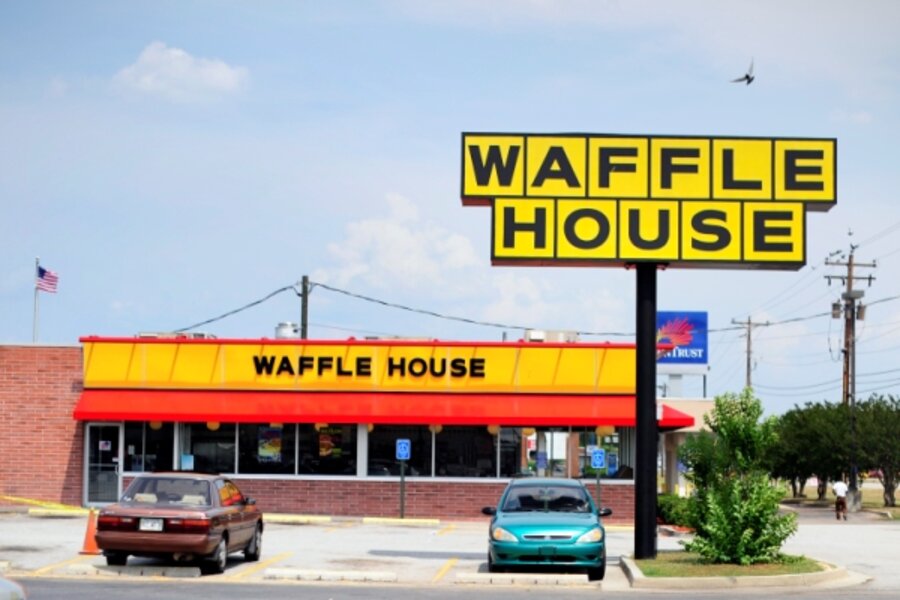Waffle House index: How breakfast signals storm damage
Loading...
If you want to assess hurricane or earthquake damage, you can send out inspectors, pore over aerial photographs, and monitor emergency communications.
Or you can visit the local Waffle House.
The restaurants are one quick way W. Craig Fugate, administrator of the Federal Emergency Management Agency, figures out the severity of a natural disaster. Using what's come to be known as the "Waffle House index," he checks to see if the restaurant is open in any given area.
If it is and serving a full menu, the index is green. That means there's water and power, he says, and area residents should be fairly well off. If the restaurant is open but serving a limited menu, the index is yellow. That means there's water but no power. If the restaurant is closed, the Waffle House index is red and there's no power or water .
"That's really bad," Mr. Fugate said in a 2009 keynote address (see video here). "That's where you go to work."
The index is a sign of experience for Fugate, who developed the technique when he headed Florida’s Department of Emergency Management, helping the state prepare and recover from multiple hurricanes during the mid-2000s.
But it's also a tribute to the disaster-preparedness practices of Waffle House, a 1,600-restaurant chain based in Norcross, Ga., which operates in 25 states and bills itself as the world's largest server of waffles.
In 2005, after hurricane Katrina destroyed seven of its restaurants and closed 100 more, Waffle House revamped its disaster preparedness, The Wall Street Journal reported. The chain figured out how to create a limited menu depending on what was working in the kitchen and also prepositioned supplies near areas likely to be hit by a storm.
That kind of advance planning makes Waffle House – along with a few other chains like Lowe’s Companies, The Home Depot, and Walmart Stores – a role model for how retailers can prepare for disasters, according to Panos Kouvelis, a professor of operations and manufacturing management at Washington University in St. Louis. If a store or restaurant is prepared for disaster, it can and back up and running faster than its competitors, Mr. Kouvelis told EHS Today, a health and safety publication based in Cleveland. That can be a competitive opportunity.
By recovering quickly, prepared businesses can capture sales just when residents most need them – whether its lumber for rebuilding or just a good hot meal after two days with no power.
So how did Waffle House do after hurricane Irene? The weekend storm knocked out power to 22 restaurants, according to the Journal article. By Wednesday evening, all but one was back up and running.





